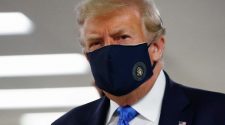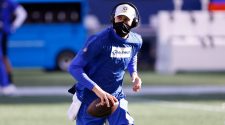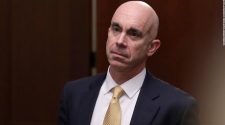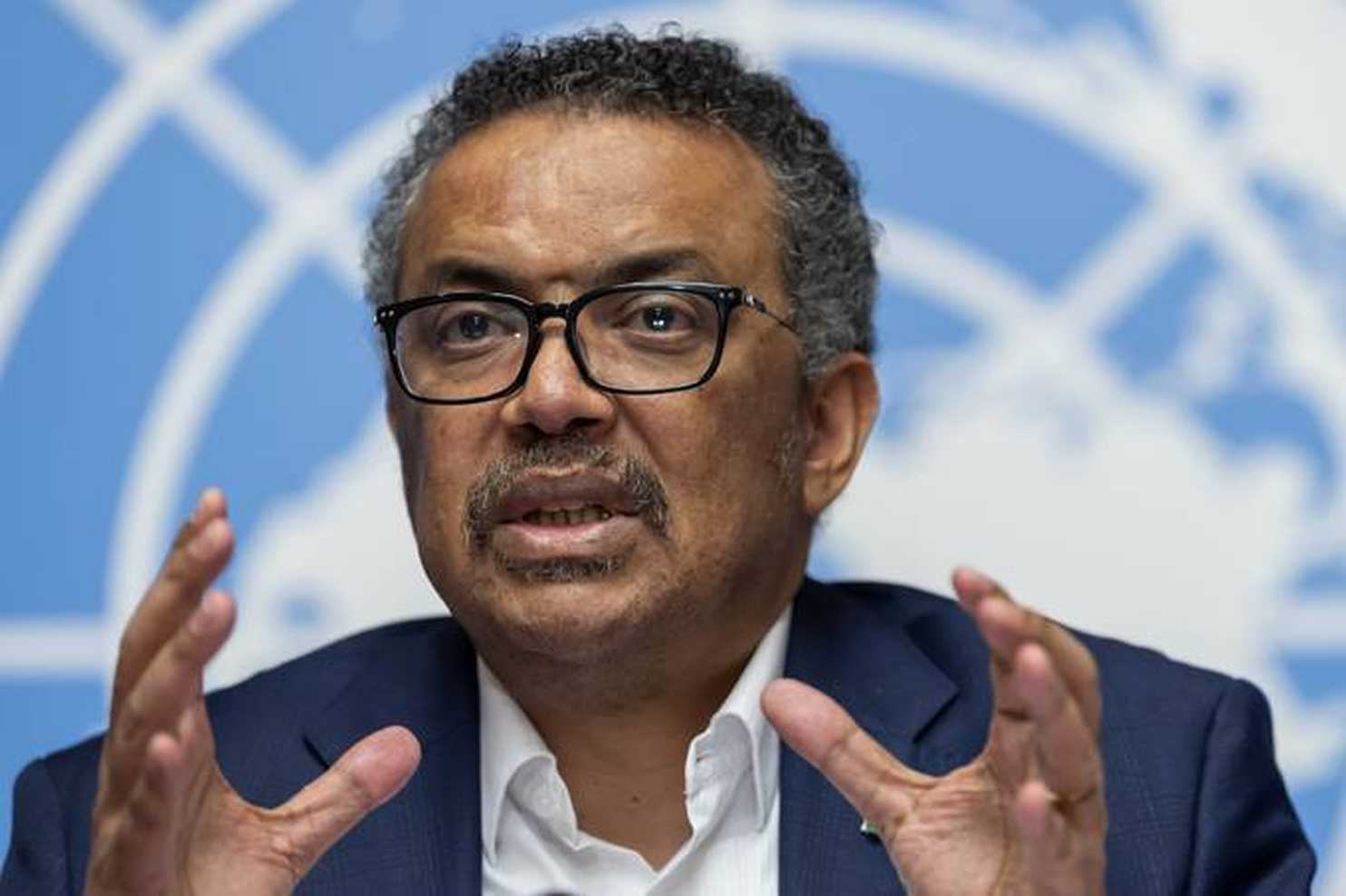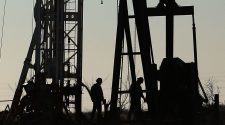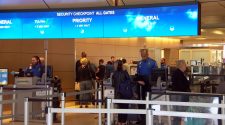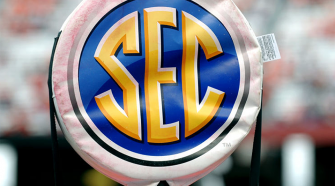with Paulina Firozi
Consider these inaccurate statements: The novel coronavirus isn’t spread from human to human. People infected with it don’t get protective antibodies. Asymptomatic people largely don’t spread it.
What do these assertions have in common? They’re all things the World Health Organization has suggested – but later walked back.
They have also caused mass confusion and criticism over how the organization is informing the public about the infectious and deadly virus.
The WHO’s most recent public fumble on the question of asymptomatic transmission has left its critics and supporters alike disappointed by an agency that is so central amid the worldwide pandemic, particularly for developing countries with little of their own public health infrastructure to rely on.
Tedros Adhanom Ghebreyesus, director general of the World Health Organization, speaks at the European headquarters of the United Nations in Geneva. (Martial Trezzini/Keystone/AP)
The WHO yesterday hastily clarified its position on the hugely consequential question whether people without covid-19 symptoms are widely spreading the virus, after an official had initially called asymptomatic transmission “rare.”
The organization, in a special news conference less than 24 hours later, stressed that much remains unknown about asymptomatic spread, my colleagues William Wan and Miriam Berger write. Officials noted that while some countries using contact tracing have not found many instances of asymptomatic spread, they “acknowledged on Tuesday some modeling studies have suggested as much as 41 percent of transmission may be due to asymptomatic people.”
Maria Van Kerkhove, head of the WHO’s emerging disease and zoonosis unit, termed the controversy “a misunderstanding.” “I wasn’t stating a policy of WHO or anything like that,” she said. “We do know that some people who are asymptomatic, or some people who do not have symptoms, can transmit the virus on.”
But the correction may have been too little, too late.
“The comment from Monday had already spread widely and been seized upon by conservatives and others to bolster arguments that people do not need to wear masks or maintain social distancing precautions,” my colleagues write. “The episode sparked criticism of WHO’s public health messaging and highlighted just how fraught and easily politicized such work remains months into the pandemic.”
Daniel Spiegel, who served as ambassador to the WHO for the Clinton administration, told me the agency’s blunder shows “a lack of sophistication and sensitivity about the impact of its pronouncements during a global pandemic.”
“These types of important announcements should be carefully vetted with outside experts from member states before they’re made public, to ensure their accuracy,” Spiegel said.
Andy Slavitt, administrator of the Centers for Medicare and Medicaid Services under President Barack Obama, urged reporters not to take WHO’s word at face value:
But much much more humility & care should be expected from WHO.
In the meantime if I were a reporter I would never source them until I fact check them.
— Andy Slavitt @ 🏡 (@ASlavitt) June 9, 2020
Other critics — some of them conservatives already wary of the WHO — piled on via Twitter.
Jim Geraghty, senior political correspondent for National Review:
Say, WHO, this is the sort of information that would have been useful about 40 million unemployed ago! pic.twitter.com/ZJzVruQLYr
— Jim Geraghty (@jimgeraghty) June 8, 2020
Norm Ornstein, resident scholar at the American Enterprise Institute:
This irresponsible act will likely cost lives.
— Norman Ornstein (@NormOrnstein) June 9, 2020
Robby Soave, senior editor of Reason:
Asymptomatic or asymptomatic And presymptomatic? This clarifies nothing. https://t.co/w7hmnpOTtB
— Robby Soave (@robbysoave) June 9, 2020
Jonathan Rockoff, health and science editor at the Wall Street Journal:
The clarification follows other instances in which @WHO has taken a position — on travel to China, masks, etc. — that draws criticism from governments and public-health experts, @drewhinshaw writes.
— Jonathan Rockoff (@jonathanrockoff) June 9, 2020
It’s hardly the first time WHO has made confusing and even inaccurate statements about the coronavirus.
Back in April, the agency said there wasn’t evidence that a person who has recovered from covid-19 is immune from a second infection. But what officials meant, they later clarified, is that there simply isn’t enough evidence yet to prove infections provide immunity — even though scientists have good reason to believe that, based on how other viruses work.
Earlier today we tweeted about a new WHO scientific brief on “immunity passports”. The thread caused some concern & we would like to clarify:
We expect that most people who are infected with #COVID19 will develop an antibody response that will provide some level of protection. pic.twitter.com/AmxvQQLTjM
— World Health Organization (WHO) (@WHO) April 25, 2020
Earlier that month, the WHO released guidance saying there’s no need for healthy people to wear face masks. The guidance came after the Centers for Disease Control had recommended people start wearing masks in public. And since then, more evidence has come out that masks might be even more beneficial than previously thought for halting the spread of the virus.
And then there was the WHO’s now-infamous Jan. 14 tweet in which it said China had found “no clear evidence” of human-to-human transmission — an assertion that now seems laughable with more than 7.2 million confirmed cases around the world and at least 410,000 deaths.
Preliminary investigations conducted by the Chinese authorities have found no clear evidence of human-to-human transmission of the novel #coronavirus (2019-nCoV) identified in #Wuhan, #China🇨🇳. pic.twitter.com/Fnl5P877VG
— World Health Organization (WHO) (@WHO) January 14, 2020
President Trump has invoked some of these missteps in blasting the organization for what he calls its mishandling of the pandemic. He has threatened that the United States would permanently pull out of the WHO, accusing it of being too soft on China – despite evidence that Chinese authorities weren’t forthcoming with information about the virus.
Trump’s promise to leave the WHO has been frowned upon by many health experts, who warn that leaving the organization will make it impossible to reform. But there’s also a growing feeling that the WHO is in need of some changes, Spiegel said.
“The organization is too easily politicized and too easily reflects geopolitical tensions,” he said.
Ahh, oof and ouch
AHH: Federal health officials announced they would commit $25 billion to safety-net providers.
Officials said the Department of Health and Human Services will give $10 billion to 750 hospitals that provide care for Medicaid patients, as well as many uninsured, Amy Goldstein reports. Another $15 billion will be doled out to doctors, dentists, clinics and other facilities that treat low-income patients. The money will go to providers who haven’t received funding through previous rounds of federal relief.
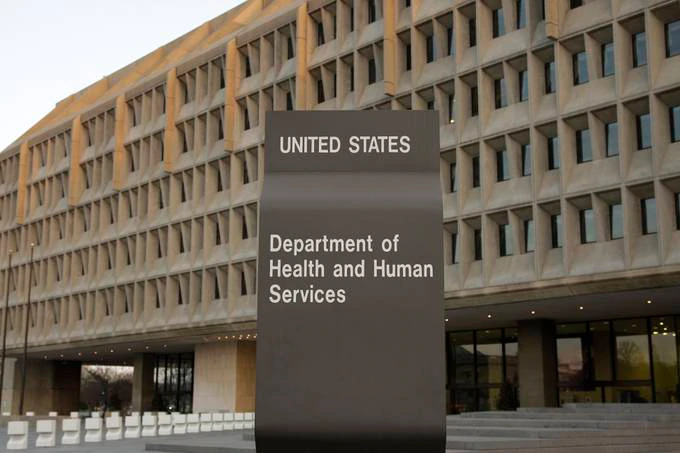
The Department of Health and Human Services building in Washington. (Alex Brandon/AP)
Hospitals and providers across the country have been hit hard by the loss in revenue from elective surgeries and other services that were put on pause. Some faced additional costs from coronavirus patients, while others spent money to prepare for a surge in cases only to see it never materialize.
“The announcement follows criticism of the Trump administration by bipartisan members of Congress, experts and hospitals themselves that, in deciding how to use $175 billion in coronavirus relief aid to health-care institutions, HHS has not focused help before now on the most vulnerable corners of the industry,” Amy writes.
“Earlier batches of money disbursed by HHS did not take into account hospitals’ financial condition. Analyses by health-policy specialists and journalists have found that, as a result, a lot of aid has gone to relatively wealthy health systems, while safety-net hospitals received comparatively little.”
OOF: Covid-19 patients who survive long stretches on ventilators or time in intensive care may have long and lonely journeys in the aftermath.
The deficits they experience “reveal the toll of the disease and of hospitalization itself,” Lenny Bernstein reports.
“A lot of the time, it’s a win to get discharged from the hospital,” said Kristen Lucke, a speech pathologist at Burke Rehabilitation Hospital in New York. “Everyone forgets there are so many things that go on before you actually make it home, if you can make it home.”

New York EMS Capt. Hugo Sosa, who survived covid-19, works on his recovery during a physical therapy session at Burke Rehabilitation Hospital in White Plains, N.Y. (Jabin Botsford/The Washington Post)
These patients often need physical therapy, and then head to rehabilitation centers.
Lenny writes about New York EMS Capt. Hugo Sosa, 53, who was discharged from the hospital last month and then headed to Burke. He spent 44 days in an intensive care unit at White Plains Hospital. Nineteen of those days were spent on a ventilator.
“Two weeks ago, when The Washington Post visited Sosa at Burke, 39 of its 156 beds were occupied by covid-19 patients,” Lenny writes. “Another 146 people, former covid-19 patients and others, were waiting to get in. At the peak of the surge in April, Burke housed 90 people infected by the virus, including acute care patients who had nowhere else to go.”
OUCH: Coronavirus task force officials told governors they’re worried the racial protests will lead to a spike in cases.
On a conference call with governors, White House coronavirus response coordinator Deborah Birx expressed concerns that yelling by protesters that have been demonstrating against police violence could “negate the health benefits of wearing a mask and that the destruction of testing sites at those protests would set back efforts to contain the virus’ spread,” the Daily Beast’s Erin Banco, Asawin Suebsaeng and Sam Stein report.
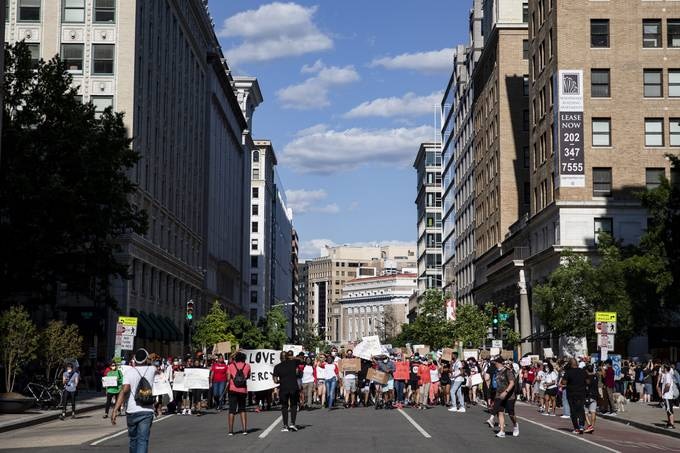
Protesters march along H Street NW near the White House during continued demonstrations over the death of George Floyd in police custody. (Samuel Corum/Getty Images)
Birx said 70 testing sites had been damaged during demonstrations, per the report.
Vice President Pence said on the call that potential surges in infections because of the demonstrations are “an issue our team is following and there is a concern.”
“The governor calls come as the trajectory of coronavirus infections in the United States is going in varying directions. While case numbers and hospitalizations have declined nationally, states such as Arizona, North Carolina, California and Utah have seen upticks that do not appear to be related to the protests,” Erin, Asawin and Sam add.
In the states
Coronavirus-related hospitalizations have surged in several states since Memorial Day.
More than a dozen states and Puerto Rico saw their highest new case averages since the beginning of the pandemic. In nine states — Texas, North and South Carolina, California, Oregon, Arkansas, Mississippi, Utah and Arizona — hospitalizations have seen an uptick since the holiday weekend, Samantha Pell, Candace Buckner and Jacqueline Dupree report.
“Data from states that are now reporting some of their highest seven-day averages of new cases are disproving the notion that the country is seeing such a spike in cases solely because of the continued increase in testing,” they write. “Many of these states that have experienced an increase in cases have also had an increase of hospitalizations, with a handful of states also nearing bed capacity.”
In Texas there have been two back-to-back days of record coronavirus hospitalizations.
The report of the high rate of hospitalizations follows the state’s moves to start reopening the state — Texas was one of the first states to ease its stay-at-home orders, allowing some businesses to restart operations at the beginning of May, CNBC’s Berkeley Lovelace Jr. reports.
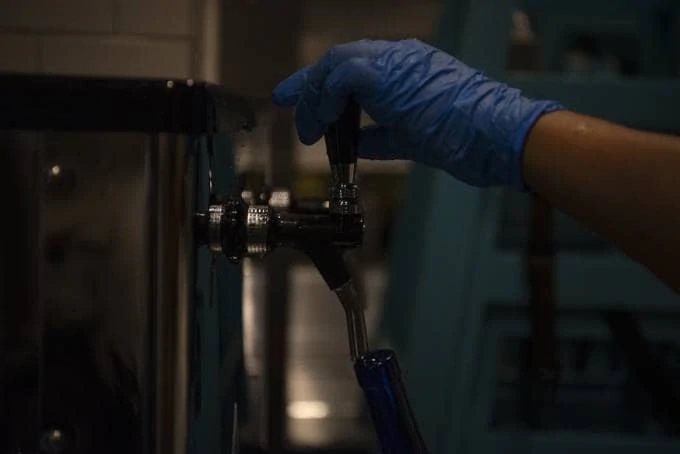
A waiter wearing gloves fills up a bottle of water at a restaurant after coronavirus restrictions were lifted in Houston. (Callaghan O’Hare/Bloomberg News)
“There are currently 2,056 patients sickened with Covid-19 in hospitals across the state as of early Tuesday afternoon, up from a record 1,935 patients Monday, according to updated data from the Texas Department of State Health Services,” Berkeley adds.
New York Gov. Andrew Cuomo (D) urged residents to proceed with caution amid reopening, specifically pointing to states that have seen a spike since reopening.
“We’re in a new phase. We’re feeling good. We’ve done great. But we have to stay smart,” he said at a briefing yesterday. “Because reopening resets the whole game. When you reopen, when people start coming out, in some ways, you go right back to day one.”
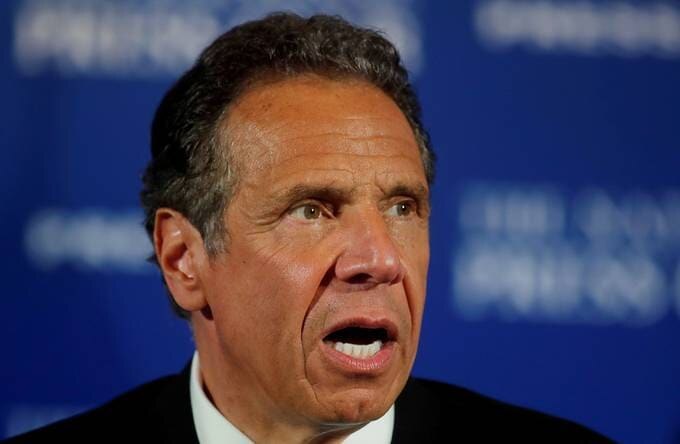
New York Gov. Andrew Cuomo. (Carlos Barria/Reuters)
“We know as a fact that reopening other states — we’re seeing significant problems,” Cuomo said.
“Cuomo pointed to other states, specifically Florida, that have seen a resurgence of the virus since reopening,” CNBC’s William Feuer and Noah Higgins-Dunn report. “On June 6, Florida reported about 1,400 new confirmed cases of the coronavirus, its most in one day since the state health department began to track data on the outbreak in mid-March. Daily new cases in the state have remained about 1,000 since June 2, according to the state’s surveillance dashboard.”
Congress on coronavirus
Three Democratic senators want an investigation of Trump’s initiative for delivering personal protective equipment.
Sens. Elizabeth Warren (D-Mass.), Charles E. Schumer (D-N.Y.) and Richard Blumenthal (D-Conn.) wrote to the Pandemic Response Accountability Committee calling for an independent probe of the arrangement between the government and six for-profit firms to transport critical equipment from overseas to health-care workers, Amy Brittain and Isaac Stanley-Becker report.
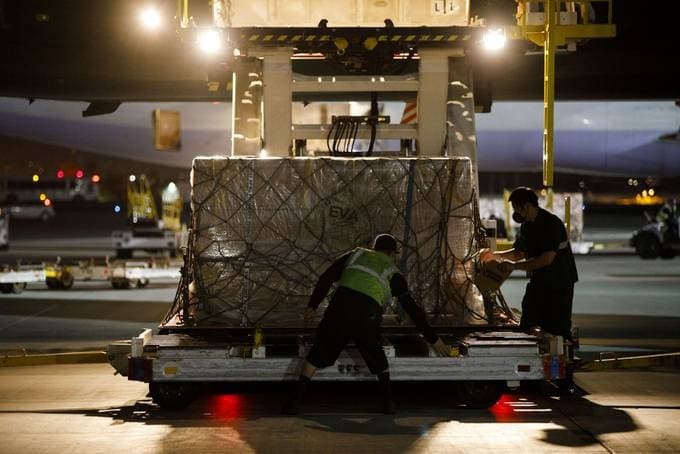
Ground crew workers unload an aircraft with a Federal Emergency Management Agency Airbridge delivery at Los Angeles International Airport. (Patrick T. Fallon/Bloomberg News)
The senators say the initiative, called Project Airbridge, has been plagued with delays and confusion as well as a lack of transparency from the agencies involved.
“Under the arrangement, the Federal Emergency Management Agency has spent approximately $154 million to fly supplies secured by the six companies from overseas into the United States. In exchange, FEMA has required that half of the Airbridge-transported supplies be sold to the companies’ customers in coronavirus hot spots. The companies have been allowed to sell the rest at their discretion,” Amy and Isaac reports. “The arrangement — which has funded 205 flights, with an additional 40 scheduled or in transit — drew scrutiny and criticism from federal and state lawmakers, who said it lacked oversight and sapped taxpayer dollars while allowing market forces to dictate distribution of much-needed supplies.”
This senator wants to start readying for the next pandemic.
Sen. Lamar Alexander (R-Tenn.), chairman of the Senate Health, Education, Labor and Pensions Committee, released a white paper detailing five recommendations for preparing for a public health crisis that comes after the coronavirus pandemic.

Sen. Lamar Alexander arrives for the weekly Senate Republican policy luncheon in the Hart Senate Office Building. (Chip Somodevilla/Getty Images)
Those recommendations including hastening research and development for testing, treatment and vaccination; broadening the ability to identify and track emerging infectious diseases; maintaining and improving medical supply stockpiles; improving state and local abilities to respond to public health issues; and bolstering federal agency coordination.
“Looking at lessons learned from the COVID-19 crisis, many of the challenges Congress has worked to address during the last 20 years still remain,” Alexander said in a statement. “Additionally, COVID-19 has exposed some gaps that had not been previously identified. These include unanticipated shortages of testing supplies and sedative drugs, which are necessary to use ventilators for COVID-19 patients.”
The economic fallout
There are some signs the Paycheck Protection Program is boosting the struggling economy after a troubled start.
Before the program began, bank lobbyists warned the Treasury Department of a flaw.
“When the PPP began accepting applications on April 3, the bank lobbyists’ prediction proved true,” Jonathan O’Connell, Jeanne Whalen, Jeff Stein and Erica Werner report. “Rather than covering all businesses that qualified, much of the funding went first to the customers the banks already knew and trusted ― including large corporations ― igniting a public firestorm that outraged tens of thousands of business owners still desperately awaiting funding.”
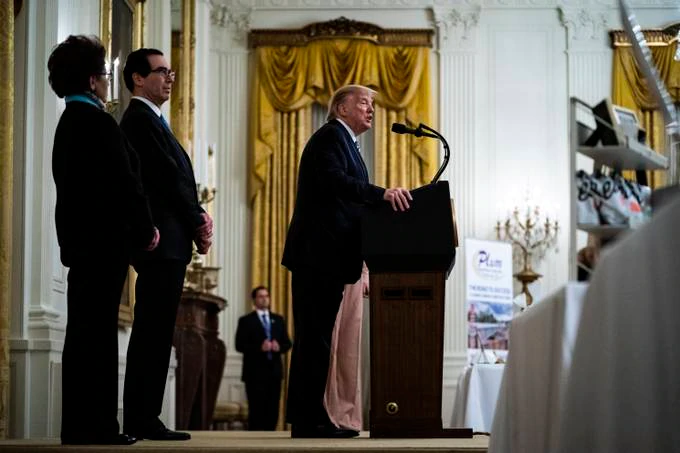
President Trump, Small Business Administration head Jovita Carranza and Treasury Secretary Steven Mnuchin speak about the Paycheck Protection Program at the White House on April 28. (Jabin Botsford/The Washington Post)
After making changes, and asking lawmakers for more money as they addressed numerous problems, the PPP after two months has “directed more than $530 billion to 4.5 million companies, and economists, business leaders, White House officials and lawmakers from both parties think it helped stabilize the economy,” they write.
But because the federal government has yet to release information about how many jobs the program saved, “it’s still unclear whether it achieved its primary goal of apportioning the lion’s share of the money to workers.”
The pandemic ended one of the most promising economies in recent history for black workers.
Wages were modestly rising, and unemployment rates were at record lows.
“The black unemployment rate, which at 5.8% in February was near the lowest since records began in 1972, tripled to 16.8% in May, according to the Labor Department,” the Wall Street Journal’s Eric Morath and Amara Omeokwe report. “Even when unemployment was low, African-Americans’ overall economic situation was fragile. As a group, they had less job security and wealth than whites, leaving them especially vulnerable when the economy shut down.”
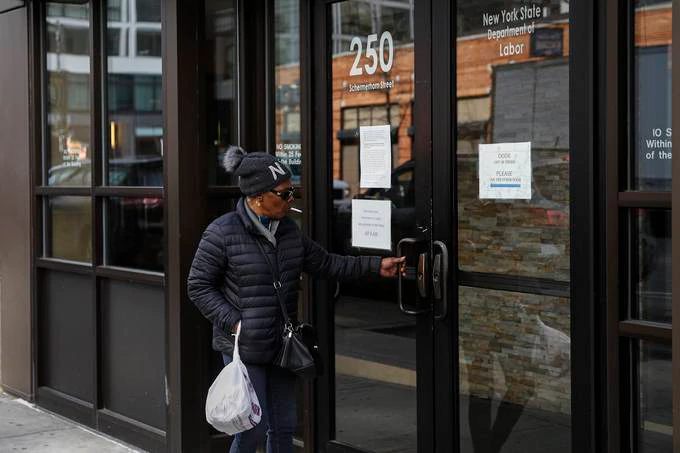
Visitors are unable to gain access to the Labor Department because of closures over coronavirus concerns. (John Minchillo/AP)
That vulnerability “now weighs on their prospects as the steepest economic contraction since the 1930s shows signs of turning. Historically, African-Americans’ recovery from recessions has been much slower than those of other groups.”
There’s more to learn about the coronavirus crisis
A study suggests the novel coronavirus may have been spreading in China as early as last fall.
The report from Harvard Medical School and Boston University researchers, which has not been peer reviewed, assessed satellite images of traffic around hospitals in the Wuhan area, as well as Web searches for covid-19 symptoms.
The study found “people in the city were going to the hospital and searching for coronavirus-like symptoms with increasing frequency as early as August 2019,” Katie Shepherd reports for The Washington Post’s live blog.

People wearing face masks are seen at Wuhan Railway Station in China’s Hubei province. (Aly Song/Reuters)
At a news conference yesterday, Chinese Foreign Ministry spokeswoman Hua Chunying said it was “ridiculous, incredibly ridiculous, to come up with this conclusion based on superficial observations such as traffic volume,” as Reuters’s Guy Faulconbridge reports.
Some scientists interviewed by Reuters questioned the research. Eric Topol, director of the Scripps Research Translational Institute, called the method “very indirect and imprecise,” and said it is not validated.
“Topol, who was not involved with the research, said he doubts the outbreak began in August, based on the evidence he has seen so far,” Guy reports. Paul Digard, a University of Edinburgh expert in virology, told Reuters the data from the study is only correlative and cannot determine cause.
Coronavirus latest
And here are a few more good stories to read this morning:
The response to the crisis:
- A study by Atlanta-based international charity CARE found just 24 percent of coronavirus response committees around the world include women, Miriam Berger reports in The Post’s live blog. That’s according to a review of 30 countries.
- Anthony S. Fauci called the coronavirus his “worst nightmare.” “In a period of four months, it has devastated the whole world,” he told biotech executives in a virtual conference hosted by the Biotechnology Innovation Organization, per the New York Times. “And it isn’t over yet.”
Thinking about post-pandemic:
- Centers for Medicare and Medicaid Services Administrator Seema Verma told Stat News that expanded telemedicine access should continue after the current crisis eases. “People recognize the value of this, so it seems like it would not be a good thing to force our beneficiaries to go back to in-person visits,” she said.

